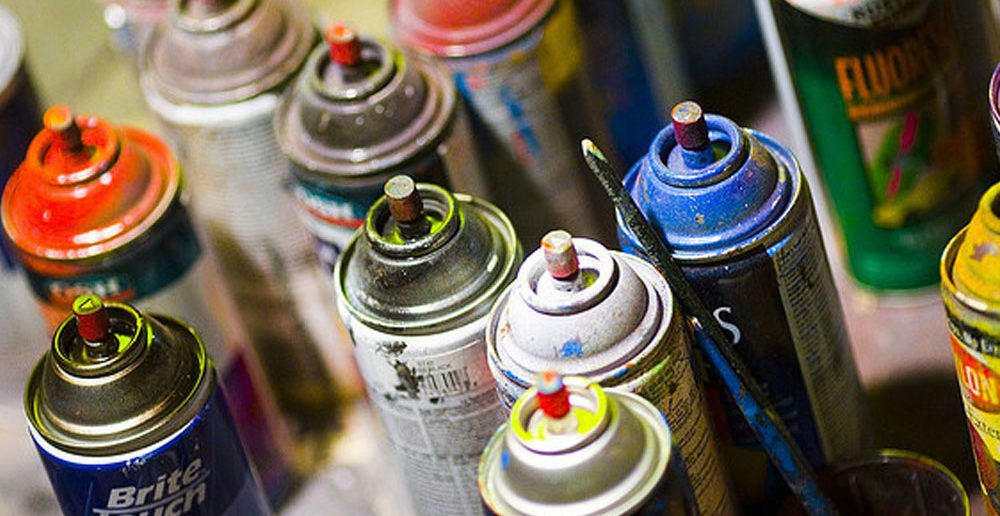paint your plastic furniture Most plastic furniture can be easily and safely painted. Outdoor furniture like plastic lawn chairs is especially easy to prepare and paint. Indoor plastic furniture can also be painted, but it may require higher-quality paint. Follow these steps, and you'll soon be relaxing in freshly painted plastic!
CLEAN THE FURNITURE Fill a bucket with hot water. Add an ammonia-based cleaner to help clean mold or mildew on older furniture. Use a sponge to wash the entire surface of the piece you're going to paint. Spray the furniture with a hose. If available, use a pressure nozzle attachment. Make sure to spray the furniture from multiple angles to ensure thorough rinsing. For brand-new plastic, wipe it with a cloth soaked in paint thinner to clean. If the furniture isn't too dirty, a multipurpose cleaner like dish soap will suffice. Dry the furniture with a cotton towel and wait for it to fully dry before proceeding.
PROTECT OTHER SURFACES Choose a well-ventilated area to paint your furniture. An open door or an outdoor area with a flat surface, like a garage, is ideal. Cover the floor surface with a material you don't mind getting paint on, such as newspapers or a ready-made drop cloth. Use a paint tarp or masking tape to cover surfaces of furniture you don't want to paint. For example, if you only want to paint the surface of a table, tape the upper part of each leg.
SAND THE FURNITURE SURFACE If the piece you're working on has been painted before, it may need a light sanding. Sanding plastic surfaces is often worthwhile, as it helps primer and paint adhere better. Use sandpaper or a sanding sponge to lightly brush the entire surface. Sand with 180 or 220 grit sandpaper. Test your sanding material in an inconspicuous area on the furniture. If visible scratches appear, reduce pressure or use finer sandpaper. After sanding, wipe the surface with a cloth to remove dust. If the furniture is already smooth, skip to priming. Older furniture left in the sun can be ready for painting after cleaning and drying.
PRIME THE SURFACE Once the surface is clean, dry, and smooth, it's ready for use. While combination paint and primer sprays are available for plastic surfaces, use a primer if you want to paint your furniture in a color not available in plastic-specific paints. Choose a primer designed for use on plastic materials, especially for outdoor-stored plastic items. You can get help from e-usta.com for these issues. These will be available at your local hardware or home improvement store and will come in a spray can. Shake the can and spray the entire surface you want to paint. Hold the spray about 30-45 cm away from the surface, applying the primer in a steady back-and-forth motion.
APPLY A COAT OF SPRAY PAINT Use a combination paint and primer designed for use on plastic or prime the surface with plastic-specific primer before applying paint. A satin finish is recommended for plastic surfaces. Hold the spray at a 45-degree angle, about 30 cm from the surface, and sweep evenly across the entire surface. Evaluate if another coat is needed once the paint has dried to the touch. It's up to you. When satisfied with the paint coverage, let the piece dry for 24 hours before using. Do not remove masking tape until the item is completely dry!
ALTERNATIVE METHOD Sand the furniture surface. Prepare the furniture surface by washing it with warm water and a multipurpose cleaner. After rinsing and allowing it to dry, use fine sandpaper to remove visible stains on the plastic surface. Lightly sand the rest of the furniture, as this will help the primer adhere to the furniture. Use a latex primer designed for use with latex paint. This helps your paints adhere to your painted furniture. If the paint doesn't stick to plastic and other materials, a bonding primer is essential to get the final finish of the top coat. Use latex paint if you are painting a furniture piece that will be stored inside your home, as you will want a paint with less odor or fumes. Also, these types of paints will be more resistant to stains and easier to clean than other options. Continue with a satin or semi-gloss finish. You will have more color options in liquid form with these types of paints. For example, choose any color you prefer at your local hardware store's paint counter because it will be cost-effective and will be enough to cover, for example, a plastic chair. Use a synthetic brush or soak natural brushes in water overnight before using them. Before you use the furniture, wait for the paint to dry completely.
